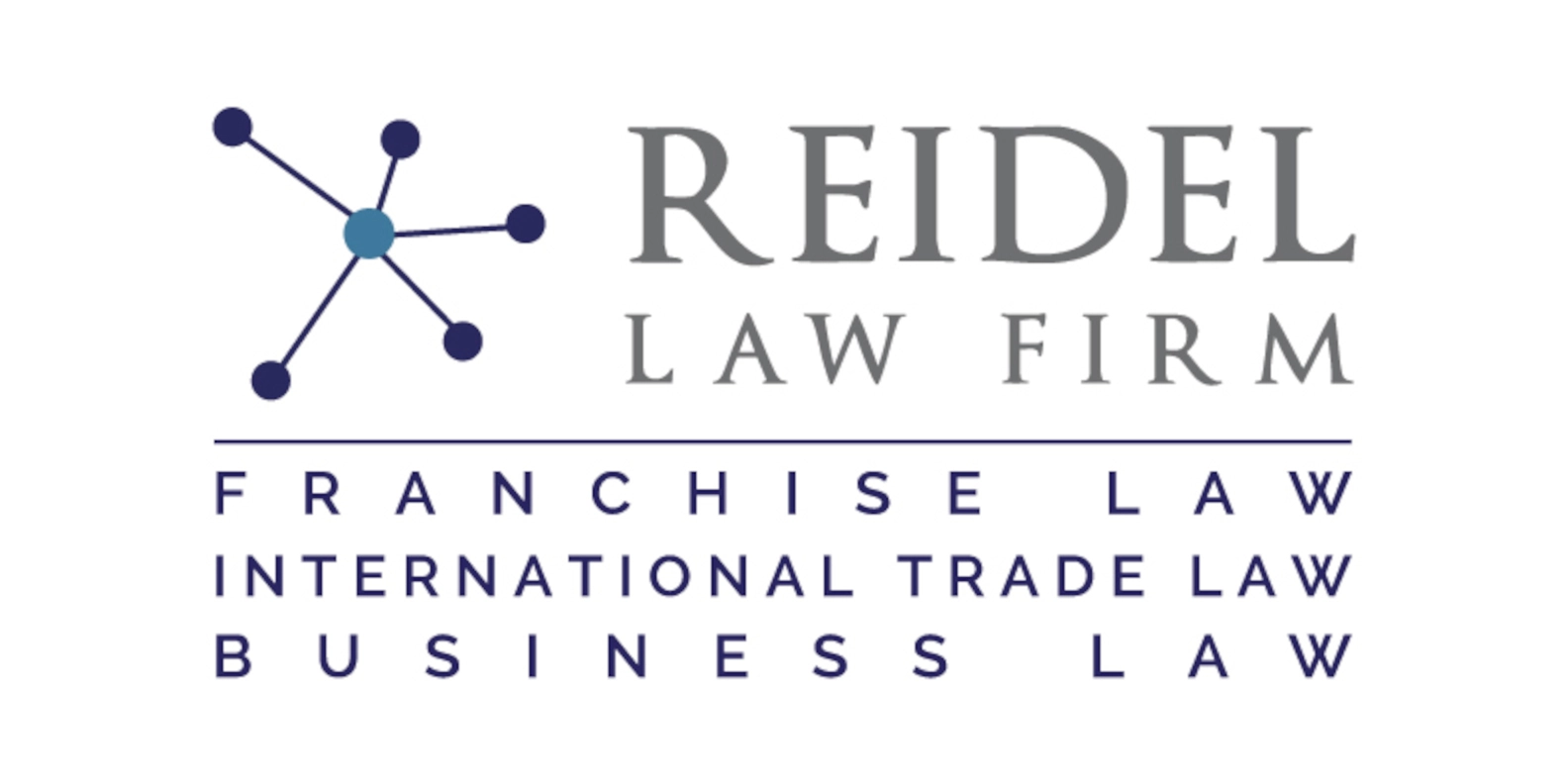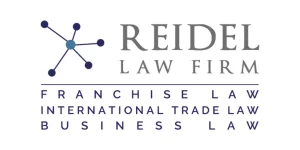The largest wealth transfer in American history is happening right now. While younger entrepreneurs struggle to build new businesses from scratch, smart buyers are positioning themselves to acquire established companies from retiring baby boomers. This demographic shift, often called the “silver tsunami,” represents an unprecedented opportunity for aspiring entrepreneurs to own business operations with proven track records, loyal customers, and immediate cash flow.
The numbers tell a compelling story: 75 million baby boomers will reach retirement age by 2030, with approximately 12 million privately-owned businesses expected to change hands. Unlike previous generations, only 15% of these established businesses will transfer to the next generation, leaving 85% available for external buyers. This means roughly 210,000 boomer-owned businesses hit the market annually, creating favorable conditions for entrepreneurs ready to act strategically.

Understanding the Baby Boomer Business Opportunity
The baby boom generation, born between 1946 and 1964, built the backbone of the american economy over the past several decades. As this wealthiest generation reaches retirement age, they’re creating what many experts consider the biggest opportunity for business ownership in modern history. Recent data from Q3 2024 shows a 5% increase in business transactions involving boomer sellers, with total enterprise value reaching $2 billion—representing a 20% growth from the previous quarter.
This demographic shift isn’t just about numbers; it’s about timing. Currently, 28.78% of business sellers are baby boomers, down from 41.15% in 2020, indicating that many owners are accelerating their exit timelines. The urgency stems from practical concerns: boomers tend to prioritize lifestyle goals over maximizing sale prices, and health insurance considerations often drive faster decision-making than in other age groups.
The scope of this generational shift extends across all industries and company sizes. From local businesses serving established communities to specialized companies with decades of industry expertise, the variety of opportunities spans the entire business spectrum. Small business development center data shows that 72% of businesses generating $250,000 to $20 million in annual revenue lack formal succession plans, creating additional opportunities for proactive buyers willing to approach owners directly.
Census bureau projections confirm this trend will peak between 2024 and 2031, making the next few years the optimal window for entrepreneurs seeking to buy businesses rather than start from ground running. The silver tsunami represents more than just a demographic shift—it’s a fundamental restructuring of american business ownership that favors prepared buyers.
Why Buying from Boomers Makes Financial Sense
Purchasing an established business from retiring baby boomers offers distinct advantages over launching new businesses. Unlike startups that require years to build customer base recognition and achieve profitability, established companies come with proven revenue streams, trained employees, and market presence from day one. This dramatically reduces the risks typically associated with business ventures.

Boomer-owned businesses typically feature mature operational systems and loyal customers who have maintained relationships with the company for years or even decades. These established brand relationships provide immediate credibility and revenue stability that new businesses spend considerable time and money attempting to build. The wealthiest generation of business owners has also had decades to refine their operations, often resulting in efficient processes and strong vendor relationships.
Financial advantages extend beyond operational stability. Many factors favor buyers in boomer business sales, particularly the emotional motivations driving these transactions. Unlike younger generation sellers who may focus primarily on maximizing returns, baby boomers retiring often prioritize ensuring their life’s work continues successfully. This emotional component frequently results in more favorable pricing and flexible deal terms than purely financial transactions.
Boomers typically offer seller financing arrangements, allowing buyers to structure payments over time rather than requiring full upfront payment. These arrangements benefit both parties: sellers receive steady income streams during retirement while buyers can acquire businesses without needing as much money initially. Expert guidance from business brokers familiar with boomer sales confirms that these emotional motivations often lead to deals that prioritize business continuity over maximum profit extraction.
The immediate access to established infrastructure cannot be overstated. Acquiring existing business operations means inheriting trained staff, operational systems, customer relationships, and vendor networks that would take years to develop independently. For entrepreneurs seeking to own business assets quickly, this represents a significant time and cost advantage over starting fresh.
Finding Off-Market Boomer Business Deals
Successfully identifying businesses before they formally enter the market provides significant competitive advantages. Off-market deals typically offer better pricing and terms since sellers haven’t yet engaged business brokers or initiated formal sale processes. The key lies in building relationships within local business communities and establishing connections with retiring owners before they decide to sell.
Small business development center offices serve as valuable local resources for identifying potential opportunities. These organizations maintain relationships with business owners across various industries and often provide confidential referrals to serious buyers. Similarly, economic development offices at city and county levels frequently know which established companies may be considering ownership transitions.

Chambers of commerce and industry associations offer additional networking opportunities. Attending trade shows and industry conferences allows buyers to meet potential sellers in relaxed settings where relationships can develop naturally. Many successful acquisitions begin with casual conversations at these events, where retiring owners first mention their plans to step back from daily operations.
Online communities and social media groups focused on business acquisitions have become increasingly valuable for deal sourcing. Facebook groups dedicated to buying businesses often feature off-market opportunities shared by business brokers, attorneys, and accountants working with retiring clients. These platforms also provide access to other buyers who may share leads or collaborate on larger transactions.
Direct outreach remains one of the most effective strategies for finding opportunities. Since 72% of small businesses lack formal exit plans, many owners haven’t considered selling until approached by interested buyers. This proactive approach requires research to identify target companies and owners, but often yields the best results. Local libraries and business directories provide starting points for researching potential targets in specific industries or geographic areas.
Building relationships with professional service providers—attorneys, accountants, business brokers, and financial advisors—creates access to deal flow as these professionals often know which clients are considering retirement. Maintaining these connections over time ensures buyers stay informed about emerging opportunities before they become widely known.
8-Step Process to Successfully Buy from Retiring Boomers
Step 1: Conduct Extensive Market Research
Effective acquisition begins with thorough industry and market analysis. Understanding macro trends, competitive landscapes, and regulatory environments helps buyers evaluate opportunities and avoid potential pitfalls. This research phase should examine both the specific business niche and broader market conditions affecting long-term viability.
Attending trade shows provides invaluable insider knowledge about industry trends, emerging challenges, and growth opportunities. These events also offer networking opportunities with industry professionals who can provide expert guidance on market conditions and business valuations. Many millennials and gen xers find that trade shows help them understand traditional industries that baby boomers have dominated for decades.
Local market research involves analyzing customer demographics, competitive density, and economic conditions in the target area. For local businesses, understanding community trends, population changes, and economic development plans helps assess future growth potential. This research forms the foundation for evaluating whether a particular business venture aligns with market opportunities.
Step 2: Build Strategic Connections
Success in buying boomer-owned businesses depends heavily on relationships with key professionals in the business community. Business brokers specializing in middle-market companies often have exclusive access to quality opportunities and can provide valuable guidance throughout the acquisition process. Building relationships with multiple brokers increases deal flow and provides different perspectives on market conditions.
Professional networks extend beyond brokers to include attorneys specializing in business transactions, accountants familiar with acquisition structures, and industry consultants who understand specific business sectors. These professionals often know retiring business owners before those owners formally decide to sell, providing early access to potential opportunities.
Developing relationships with retiring business owners themselves requires patience and genuine interest in their industries and challenges. Many boomers appreciate younger entrepreneurs who show respect for their experience and genuine interest in continuing their legacy. These relationships often prove more valuable than purely transactional approaches to deal sourcing.
Step 3: Perform Comprehensive Due Diligence
Due diligence requires meticulous examination of financial records, legal documents, and operational systems. Buyers should review at least three to five years of financial statements, tax returns, and cash flow records to understand business performance trends and identify potential concerns. This financial analysis forms the basis for valuation and deal structuring decisions.

Legal due diligence involves examining corporate governance documents, contracts with key customers and vendors, and any outstanding legal issues. Checking for liens, pending lawsuits, or regulatory compliance problems helps buyers understand potential liabilities they may inherit. Certificates of good standing and current licenses ensure the business can continue operating without interruption.
Operational due diligence examines customer concentration, employee capabilities, vendor relationships, and competitive positioning. Understanding which customers generate the most revenue and whether key relationships depend on the current owner helps assess transition risks. Similarly, evaluating employee skills and potential retention issues helps plan for smooth transition management.
Step 4: Analyze Competition and Market Position
Understanding competitive dynamics helps buyers evaluate sustainable advantages and identify potential threats to long-term success. This analysis should examine market share, differentiation strategies, barriers to entry, and customer loyalty factors. Identifying what makes the business unique helps determine whether competitive advantages will survive ownership transition.
Market position analysis involves evaluating customer relationships, brand recognition, and operational efficiencies compared to competitors. Many boomer-owned businesses have developed strong local market positions over decades, but may lag in technology adoption or digital marketing compared to newer entrants. Understanding these dynamics helps buyers plan post-acquisition improvements.
Long-term sustainability requires assessing industry trends, regulatory changes, and potential disruption from new technologies or business models. Some traditional industries face significant challenges from digital transformation or changing consumer preferences, while others may benefit from demographic trends or economic conditions.
Step 5: Develop Future Growth Strategy
Post-acquisition success requires clear plans for business expansion and modernization. Many boomer-owned businesses operate with outdated technology systems or manual processes that create opportunities for efficiency improvements and cost savings. Developing detailed modernization plans helps justify acquisition costs and project future returns.
Growth strategies should identify new market opportunities, potential service expansions, and operational improvements that can drive increased revenue. Technology upgrades often provide immediate benefits through improved efficiency and customer service capabilities. Digital marketing initiatives can expand customer reach for businesses that have relied primarily on traditional marketing methods.
Financial projections should model various growth scenarios and calculate expected returns on investment. These projections help determine appropriate purchase prices and financing structures while providing roadmaps for post-acquisition management. Conservative estimates based on realistic assumptions provide better planning foundations than overly optimistic projections.
Step 6: Position Yourself as the Ideal Buyer
Baby boomers often care deeply about preserving their business legacy and ensuring employee welfare continues after the sale. Buyers who demonstrate shared values, industry experience, and genuine respect for the seller’s achievements gain significant advantages in negotiations. This positioning requires understanding what matters most to the individual seller beyond financial considerations.
Presenting relevant industry experience and management capabilities helps build seller confidence in the buyer’s ability to continue business success. Personal guarantees about maintaining quality standards, customer relationships, and employee treatment often carry more weight with boomer sellers than pure financial offers. These assurances address emotional concerns about the business’s future under new ownership.
Continuity plans that outline how the business will maintain its culture and customer relationships help differentiate serious buyers from purely financial purchasers. Many boomers prefer selling to buyers who will preserve what they’ve built rather than immediately implementing major changes or cost-cutting measures.
Step 7: Navigate the Emotional Sale Process
Selling represents the end of an era for many baby boomers who have devoted decades to building their companies. This emotional component often complicates negotiations and extends decision-making timelines as sellers work through feelings about ending their business careers. Successful buyers approach these situations with empathy and patience.
Transition periods allowing sellers to remain involved temporarily help ease emotional concerns while providing valuable knowledge transfer opportunities. These arrangements benefit both parties: sellers feel more comfortable with gradual transitions while buyers gain access to operational knowledge and customer relationships. Structured transition plans typically work better than abrupt ownership changes.
Negotiating deal terms requires balancing seller emotions with business realities. Flexible payment structures, ongoing consulting arrangements, and gradual responsibility transfers often facilitate successful closings when sellers struggle with immediate complete separation from their businesses.
Step 8: Execute Smooth Transition
Successful ownership transitions require detailed planning and careful execution. A comprehensive 100-day integration plan should outline key priorities including customer introductions, employee meetings, vendor relationship transfers, and operational system reviews. This structured approach helps maintain business continuity while implementing necessary changes.
Customer relationship management during transition periods requires particular attention since established businesses depend heavily on long-term customer loyalty. Introducing new ownership through existing relationships rather than making abrupt changes helps maintain confidence and prevents customer defections during vulnerable transition periods.
Technology modernization and operational improvements should be implemented gradually to avoid disrupting established workflows while upgrading capabilities. Balancing respect for existing systems with necessary improvements requires careful change management and employee involvement in upgrade planning.
Overcoming Common Challenges When Buying from Boomers
Acquiring businesses from baby boomers presents unique challenges that differ from other business purchases. Technology gaps represent perhaps the most common issue, as many boomer-owned businesses operate with outdated systems or manual processes. Buyers must budget for modernization costs while planning implementation strategies that don’t disrupt ongoing operations.

Succession planning deficiencies create additional complexity since many owners serve as sole decision-makers without developed management teams. This key-man dependency requires careful transition planning to ensure business operations continue smoothly after the owner’s departure. Developing internal capabilities or recruiting experienced managers becomes essential for maintaining operational stability.
Family dynamics sometimes complicate sales processes when family members have different opinions about selling timing, pricing, or buyer selection. Even when businesses won’t pass to the next generation, family members may influence decision-making or create emotional pressure that affects negotiations. Understanding these dynamics helps buyers navigate sensitive situations appropriately.
Knowledge transfer represents another critical challenge since retiring owners often possess decades of industry-specific expertise, customer relationship history, and operational knowledge that isn’t documented. Successful transitions require structured knowledge transfer processes, comprehensive training periods, and sometimes ongoing consulting arrangements to preserve institutional knowledge.
Emotional attachment issues affect both sellers and employees who may resist changes under new ownership. Managing these concerns requires sensitivity, clear communication about future plans, and demonstrated commitment to preserving positive aspects of existing business culture while implementing necessary improvements.
Financing Strategies for Boomer Business Acquisitions
Multiple financing options exist for entrepreneurs seeking to buy businesses from retiring baby boomers. SBA 7(a) loans specifically designed for business acquisitions offer favorable terms and lower down payment requirements than conventional commercial loans. These government-backed programs recognize the economic benefits of business ownership transitions and provide accessible financing for qualified buyers.
Seller financing arrangements are particularly common in boomer business sales, as retiring owners often prefer steady income streams over lump sum payments. These arrangements allow buyers to structure payments over several years while providing sellers with ongoing returns on their business investments. Interest rates and payment terms are typically negotiated based on business cash flow and buyer qualifications.
Earnout agreements tie portions of the purchase price to future business performance, aligning buyer and seller interests while reducing upfront capital requirements. These structures work particularly well when buyers plan significant improvements or expansions that should increase business value. Earnout terms must be carefully structured to avoid disputes over performance measurements and payment calculations.
Asset-based lending uses business equipment, inventory, or real estate as collateral for acquisition financing. This approach works well for businesses with substantial physical assets but requires careful valuation and legal documentation. Interest rates and loan terms depend on asset values and business cash flow capabilities.
Investor partnerships allow buyers to share acquisition costs and risks with other investors or private equity groups. These arrangements provide access to larger deals while reducing individual financial exposure. Partnership terms must clearly define roles, responsibilities, and profit-sharing arrangements to avoid future conflicts.
Timeline and Market Outlook Through 2031
The current period through 2031 represents the peak opportunity window for acquiring boomer-owned businesses. Market data shows that 29% of business owners plan to exit within five years, with 54% expecting to sell within ten years. This timeline creates unprecedented deal flow for prepared buyers willing to act quickly on quality opportunities.
Market conditions favor buyers currently, but increased competition is expected as more entrepreneurs recognize these opportunities. Early movers benefit from less competitive environments and more favorable pricing before deal volume peaks. The proportion of boomer sellers has already declined from 41.15% in 2020 to 28.78% in 2024, indicating accelerating exit timelines among retiring owners.
Industry experts predict that market saturation will increase through 2031 as more businesses enter the market simultaneously. This increased supply may create temporary buyer advantages, but also signals that the best opportunities will be identified and acquired earlier in the cycle. Timing becomes increasingly important as market dynamics evolve.
The total value of business assets changing hands is estimated at $10 trillion over the coming years, representing the largest wealth transfer in American history. This scale creates opportunities across all business sizes and industries, from small local businesses to substantial middle-market companies with millions in annual revenue.
Economic conditions and interest rates will influence deal structures and financing availability throughout this period. Buyers should monitor these factors while building acquisition capabilities and deal sourcing networks to capitalize on optimal timing for their specific situations and target markets.
Success in this environment requires combining thorough preparation with decisive action when quality opportunities arise. The entrepreneurs who invest time now in building networks, developing financing relationships, and understanding target markets will be best positioned to capitalize on this historic opportunity to acquire established businesses from the baby boom generation.
The silver tsunami represents more than just a demographic shift—it’s a fundamental restructuring of business ownership that favors prepared buyers over those who wait. For aspiring entrepreneurs ready to own business operations with proven track records rather than starting from scratch, the time to begin preparing is now. The next few years will determine who captures these once-in-a-generation opportunities to acquire the life’s work of America’s most successful business generation.


